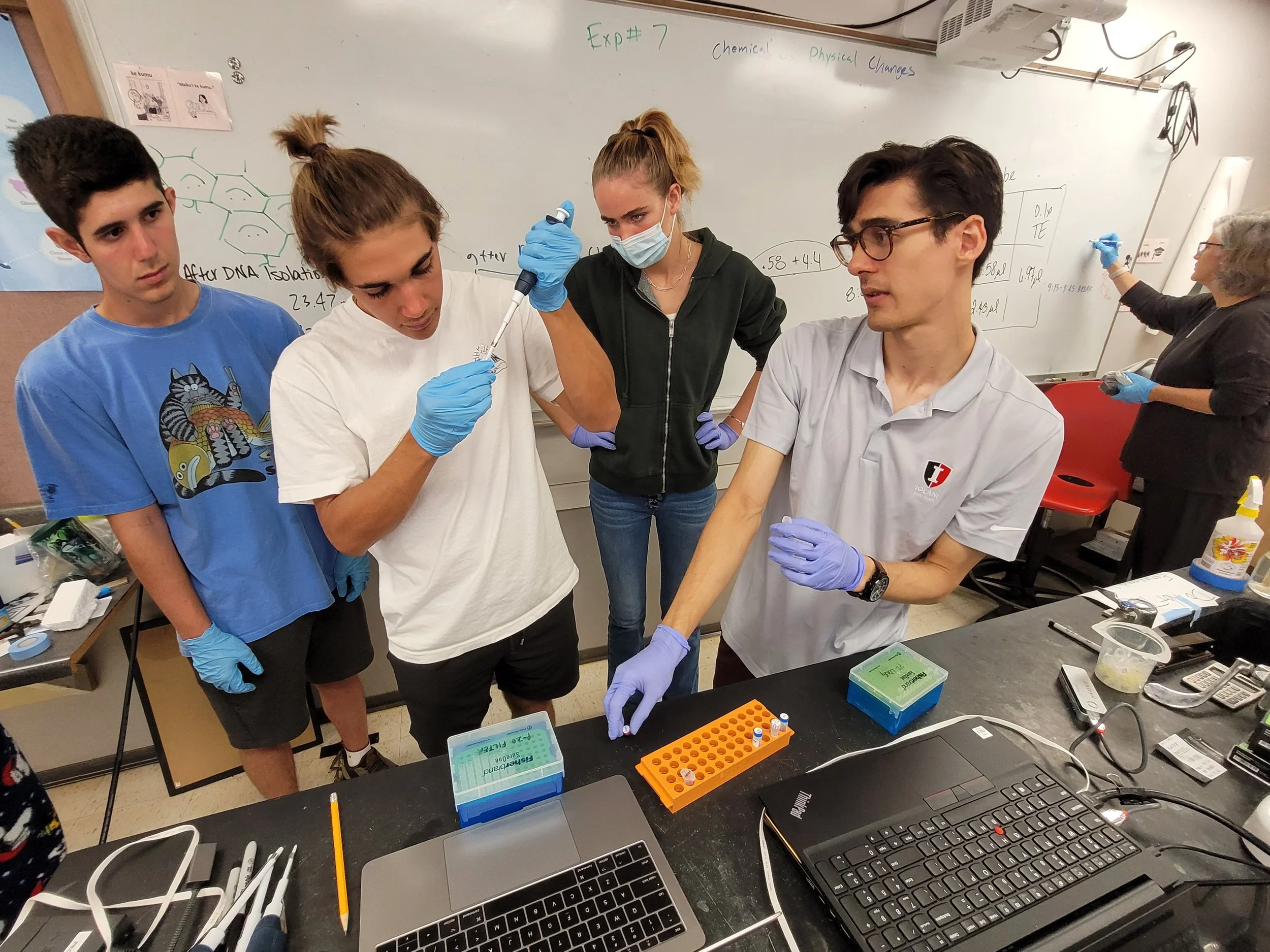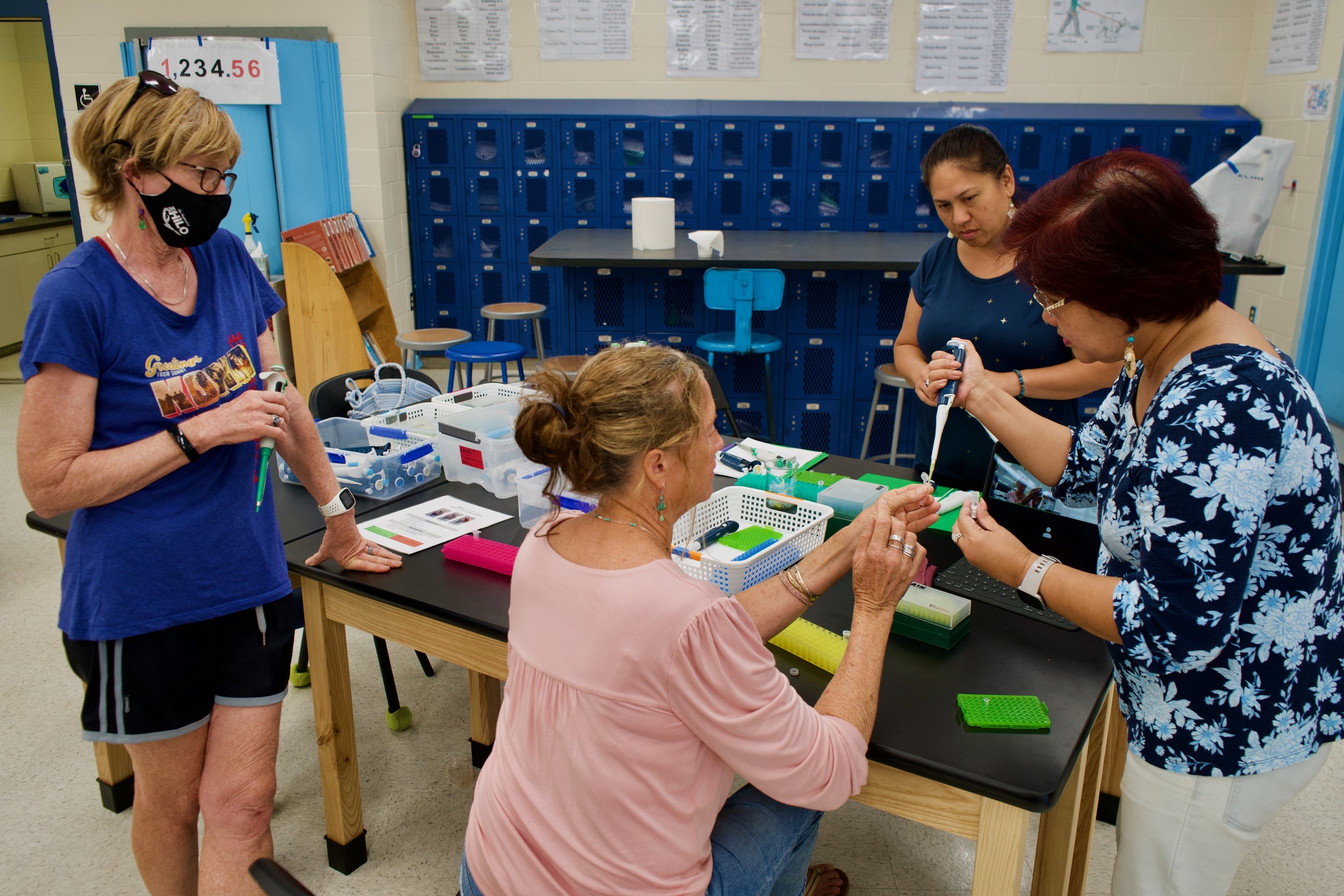Last year, the ʻĀina-Informatics Network underwent extraordinary growth, propelled by a Governor’s Emergency Educational Relief Grant, which in turn allowed students across Hawaiʻi to mobilize a response to the ongoing COVID-19 pandemic through DNA sequencing.
This fall, our network pivoted back towards our commitment to understanding the biodiversity of our islands using real world applications of genome science. Deploying our mobile lab at 12 different schools on three islands, we continued to generate data for existing projects such as our GM Papaya study (134 new trees tested) and our Non-tuberculous Mycobacteria sequencing project (3 new NTM genomes assembled).
Our network also focused on new projects under development, such as a pilot collaboration between Lea-Carol Glennon (KS Hawaiʻi), Liz Steiner and Richard Sypniewski (Kapaʻa HS) and ʻIolani School examining Wolbachia strain types in invasive mosquitoes which carry avian malaria. While we are still refining our protocols to maximize the reliability of our results, student generated data are being shared with our partners at the USGS Pacific Island Ecosystems Research Center, the University of Hawaiʻi at Mānoa and Birds, Not Mosquitoes.
Pipe cleaner mosquitoes designed by Kapaʻa High students as part of Liz and Sy’s mosquito unit for 9th grade general biology.
Prototype for a DIY mosquito larvae rearing chamber made by Liz and Sy’s students.
Photo credits: E. Tong
Network Highlights
ʻAiea High School investigating microbial community changes in Hālawa Stream
Following the contamination of the Kapūkakī well with petroleum products leaked from the Navy’s Red Hill fuel storage facility, regulators approved the treatment and subsequent discharge of the well water into Hālawa Stream. AIN Fellows Cohort 1 teacher Alyssa Bailey and her students at ʻAiea High School leapt into action, conducting water quality surveys on their campus and around the community. With support from Drs. Yinphan Tseng and Andrea Jani at UH Mānoa, students are conducting 16S sequencing on eDNA filtered from various points along Hālawa Stream to profile changes in the microbial community resulting from the discharge. Preliminary results indicate that the bacterial taxa students identified downstream of the discharge site may be bioindicators for specific hydrocarbon contaminants persisting in the water even following treatment.
Hawaiʻi Baptist Academy to name a novel bacterium discovered in a lava cave
In March 2020, students at HBA participated in an ongoing effort by ʻĀina-Informatics (and our partners Drs. Stuart Donachie and Rebecca Prescott at UH Mānoa) to sequence unknown microbes isolated from Hawaiʻi Island lava caves. Known simply as BL16E, one such organism sequenced and assembled by HBA students would later prove to be previously undescribed to science. The scientific name they have proposed for this bacterium is Paraflavitalea speifideiaquila, combining the Latin words for hope (spes), faith (fides) and eagle (aquila - HBA’s mascot). This is the second novel organism our network has had the honor of naming. In 2018, students at St. Andrews sequenced a novel bacterium and proposed the name Bradyrhizobium prioratisuperbia.
Teacher Professional Development
Kona 2022 Teacher Workshop
In November, ʻĀina-Informatics hosted a free, two-day teacher workshop at Kealakehe High School in Kailua-Kona introducing projects from our place-based genome science curriculum to both new and returning teachers. Hosted by Gigi Goochey with support from Justin Brown, we were stoked to spend a couple of days working on basic and advanced techniques with teachers from all over Hawaiʻi Island.
Educators from Kealakehe High, Keaʻau High, Kaʻū Middle, Parker School, Hawaiʻi Preparatory Academy and West Hawaiʻi Explorations Academy were in attendance at our November Kona workshop.
Photo credit: Ethan Hill
For returning participants, the advanced workshop focused on new foundational bioinformatics content designed by ʻĀina-Informatics to make genomic data analysis more accessible to non-coders. Pipelines for environmental DNA (eDNA) analyses written by Ethan Hill - containerized in Docker and publicly available via Github - allow students and teachers to input raw amplicon sequences and produce clear, understandable summaries of what taxa are present within a mixed eDNA sample.
A sample output of an eDNA pipeline surveying a stream for native and invasive fish using just the water itself.
Save the date!
We are collaborating with STEMworks Hawaiʻi to bring you our next teacher workshop in Kīhei, Maui on March 11-12, 2023. Travel to/from Kīhei for two teachers each from Molokaʻi and Lānaʻi will be supported by ʻĀina-Informatics.
ʻĀina-Informatics Teacher Fellows Cohort ʻElua
Our Teacher Fellows program provides selected teachers with tailored professional development and equipment support around a custom genome science project of their design. This year’s cohorts’ projects investigate deep sea cephalopods (Susan Rickards, Parker School), sediments in loko iʻa (Amber O’Reilly, Kahuku High School), microbes in Korean natural farming (Johanna Anton, Hawaiʻi Preparatory Academy) and nutrient cycling in an axolotl tank (Daniella Griffay, Radford High School).






